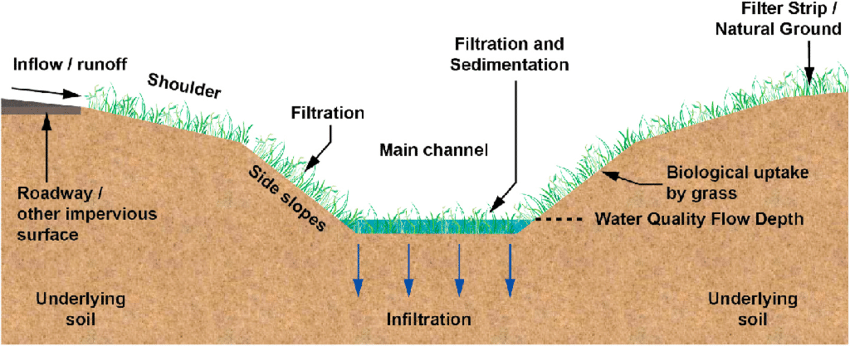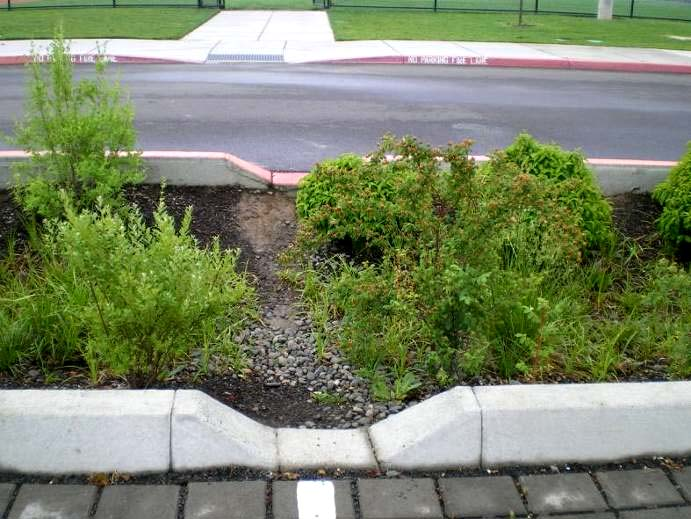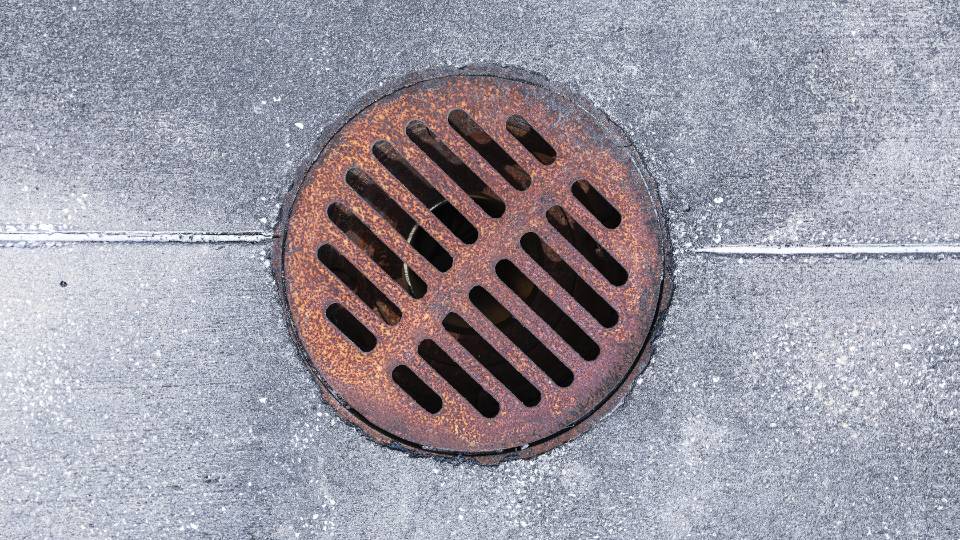Low-Impact Urban Development

Stormwater runoff is a contamination pathway for many pollutants. As the climate continues to change, increasing amounts of precipitation will cause increased stormwater runoff. Stormwater is the result of man-made modifications to natural hydrologic processes. Stormwater runoff disrupts aquatic habitats, causes water quality impairments, and degrades streams through flooding. Existing infrastructure no longer supports current stormwater management needs in many places. The life of current stormwater management systems can be extended through the implementation of low impact development practices.
Goals of Low Impact Development
Low impact development implements practices that imitate natural water infiltration processes in order to reduce stormwater runoff. Infiltration helps maintain stream temperatures and drinking water supplies. Many low impact designs use greenspace. Communities with increased greenspace have been shown to have decreased crime rates and an improved sense of social connectedness.
City planners and developers should make designs with the future in mind. Stormwater management has been traditionally based off of historical data rather than models for climate change impacts. The use of green infrastructure now allows time for infrastructure repairs and retrofits before the stormwater management systems begin to fail.
Methods
There are many ways cities can implement green infrastructure into their existing layout. One of these is to reduce the area of impervious surfaces in new and existing development. Impervious surfaces are man-made surfaces that resist the infiltration of water. Impervious surfaces can be reduced through the installation of grass swales and rain gardens.

A grass swale is an open channel covered with vegetation. Grass swales are used in place of a typical ditch. Sites with flat slopes near roadways are well-suited for the installation of a grass swale. They should not be located near land use areas with a high pollution potential, such as gas stations and industrial areas.
Rain gardens store and filter storm water from roofs or other impervious surfaces. Rain gardens can be aesthetically pleasing and provide natural habitat for butterflies and birds. Native plants should be used so the rain garden can successfully mimic natural infiltration processes for the area.

Other ways to reduce stormwater runoff include using curb cuts, eliminating curbs and gutters when possible, disconnecting impervious surfaces, reducing sidewalk widths, and reducing the length of driveways. All of these designs manage stormwater by shifting approaches from transporting stormwater to promoting its infiltration.
References
EPA-832-F-21-031PEPA 841-F-07-006
Hoover, F.-A., & Hopton, M. E. (2019). Developing a framework for stormwater management: leveraging ancillary benefits from urban greenspace. Urban Ecosystems, 22. https://doi.org/10.1007/s11252-019-00890-6
Low impact development. (2023, July 10). Utah Department of Environmental Quality. https://deq.utah.gov/water-quality/low-impact-development
Pyke, C., Warren, M. P., & Johnson, T. (2011). Assessment of low impact development for managing stormwater with changing precipitation due to climate change. Landscape and Urban Planning, 103(2), 166–173. https://doi.org/10.1016/j.landurbplan.2011.07.006
Authors
Erin Rivers, Water Quality Extension Specialist; Abby Barton, Intern
Related Research



